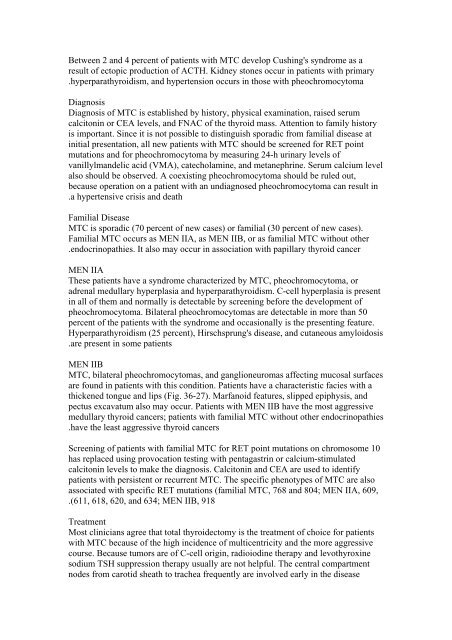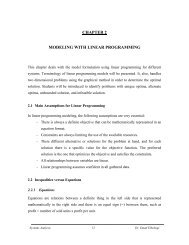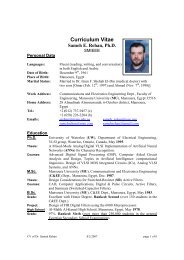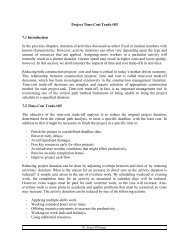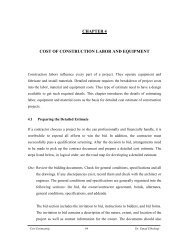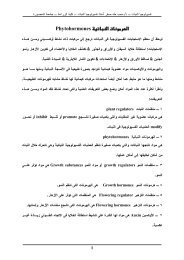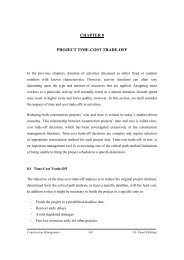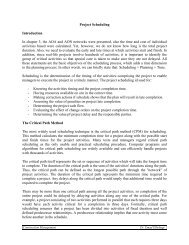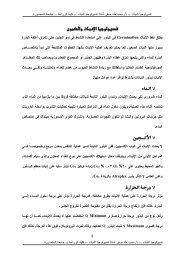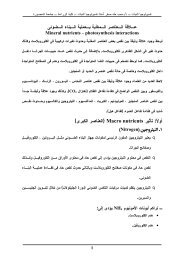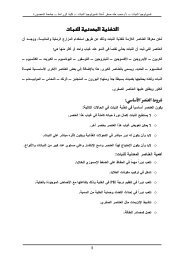Thyroid and Parathyroid
Thyroid and Parathyroid
Thyroid and Parathyroid
You also want an ePaper? Increase the reach of your titles
YUMPU automatically turns print PDFs into web optimized ePapers that Google loves.
Between 2 <strong>and</strong> 4 percent of patients with MTC develop Cushing's syndrome as a<br />
result of ectopic production of ACTH. Kidney stones occur in patients with primary<br />
. hyperparathyroidism, <strong>and</strong> hypertension occurs in those with pheochromocytoma<br />
Diagnosis<br />
Diagnosis of MTC is established by history, physical examination, raised serum<br />
calcitonin or CEA levels, <strong>and</strong> FNAC of the thyroid mass. Attention to family history<br />
is important. Since it is not possible to distinguish sporadic from familial disease at<br />
initial presentation, all new patients with MTC should be screened for RET point<br />
mutations <strong>and</strong> for pheochromocytoma by measuring 24-h urinary levels of<br />
vanillylm<strong>and</strong>elic acid (VMA), catecholamine, <strong>and</strong> metanephrine. Serum calcium level<br />
also should be observed. A coexisting pheochromocytoma should be ruled out,<br />
because operation on a patient with an undiagnosed pheochromocytoma can result in<br />
. a hypertensive crisis <strong>and</strong> death<br />
Familial Disease<br />
MTC is sporadic (70 percent of new cases) or familial (30 percent of new cases).<br />
Familial MTC occurs as MEN IIA, as MEN IIB, or as familial MTC without other<br />
. endocrinopathies. It also may occur in association with papillary thyroid cancer<br />
MEN IIA<br />
These patients have a syndrome characterized by MTC, pheochromocytoma, or<br />
adrenal medullary hyperplasia <strong>and</strong> hyperparathyroidism. C-cell hyperplasia is present<br />
in all of them <strong>and</strong> normally is detectable by screening before the development of<br />
pheochromocytoma. Bilateral pheochromocytomas are detectable in more than 50<br />
percent of the patients with the syndrome <strong>and</strong> occasionally is the presenting feature.<br />
Hyperparathyroidism (25 percent), Hirschsprung's disease, <strong>and</strong> cutaneous amyloidosis<br />
. are present in some patients<br />
MEN IIB<br />
MTC, bilateral pheochromocytomas, <strong>and</strong> ganglioneuromas affecting mucosal surfaces<br />
are found in patients with this condition. Patients have a characteristic facies with a<br />
thickened tongue <strong>and</strong> lips (Fig. 36-27). Marfanoid features, slipped epiphysis, <strong>and</strong><br />
pectus excavatum also may occur. Patients with MEN IIB have the most aggressive<br />
medullary thyroid cancers; patients with familial MTC without other endocrinopathies<br />
. have the least aggressive thyroid cancers<br />
Screening of patients with familial MTC for RET point mutations on chromosome 10<br />
has replaced using provocation testing with pentagastrin or calcium-stimulated<br />
calcitonin levels to make the diagnosis. Calcitonin <strong>and</strong> CEA are used to identify<br />
patients with persistent or recurrent MTC. The specific phenotypes of MTC are also<br />
associated with specific RET mutations (familial MTC, 768 <strong>and</strong> 804; MEN IIA, 609,<br />
.( 611, 618, 620, <strong>and</strong> 634; MEN IIB, 918<br />
Treatment<br />
Most clinicians agree that total thyroidectomy is the treatment of choice for patients<br />
with MTC because of the high incidence of multicentricity <strong>and</strong> the more aggressive<br />
course. Because tumors are of C-cell origin, radioiodine therapy <strong>and</strong> levothyroxine<br />
sodium TSH suppression therapy usually are not helpful. The central compartment<br />
nodes from carotid sheath to trachea frequently are involved early in the disease


